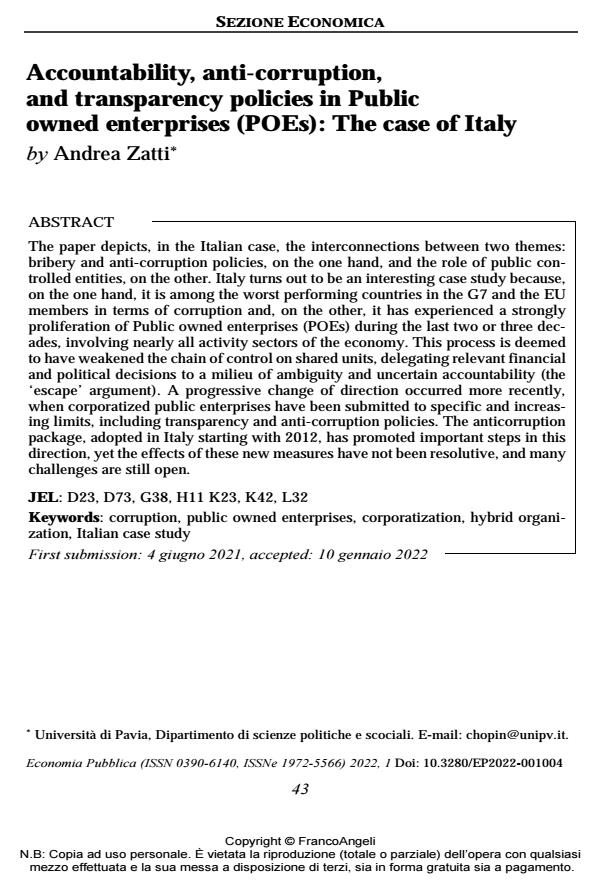Accountability, anti-corruption, and transparency policies in Public owned enterprises (POEs): The case of Italy
Titolo Rivista ECONOMIA PUBBLICA
Autori/Curatori Andrea Zatti
Anno di pubblicazione 2022 Fascicolo 2022/1
Lingua Inglese Numero pagine 36 P. 43-78 Dimensione file 168 KB
DOI 10.3280/EP2022-001004
Il DOI è il codice a barre della proprietà intellettuale: per saperne di più
clicca qui
Qui sotto puoi vedere in anteprima la prima pagina di questo articolo.
Se questo articolo ti interessa, lo puoi acquistare (e scaricare in formato pdf) seguendo le facili indicazioni per acquistare il download credit. Acquista Download Credits per scaricare questo Articolo in formato PDF

FrancoAngeli è membro della Publishers International Linking Association, Inc (PILA)associazione indipendente e non profit per facilitare (attraverso i servizi tecnologici implementati da CrossRef.org) l’accesso degli studiosi ai contenuti digitali nelle pubblicazioni professionali e scientifiche
The paper depicts, in the Italian case, the interconnections between two themes: bribery and anti-corruption policies, on the one hand, and the role of public controlled entities, on the other. Italy turns out to be an interesting case study because, on the one hand, it is among the worst performing countries in the G7 and the EU members in terms of corruption and, on the other, it has experienced a strongly proliferation of Public owned enterprises (POEs) during the last two or three decades, involving nearly all activity sec-tors of the economy. This process is deemed to have weakened the chain of control on shared units, delegating relevant financial and political decisions to a milieu of ambiguity and uncertain accountability (the ‘escape’ argument). A progressive change of direction occurred more recently, when corporatized public enterprises have been submitted to specific and increasing limits, including transparency and anti-corruption policies. The anticorruption package, adopted in Italy starting with 2012, has promoted important steps in this direction, yet the effects of these new measures have not been resolutive, and many challenges are still open.
Parole chiave:corruption, public owned enterprises, corporatization, hybrid organization, Italian case study
Jel codes:D23, D73, G38, H11 K23, K42, L32
Andrea Zatti, Accountability, anti-corruption, and transparency policies in Public owned enterprises (POEs): The case of Italy in "ECONOMIA PUBBLICA " 1/2022, pp 43-78, DOI: 10.3280/EP2022-001004